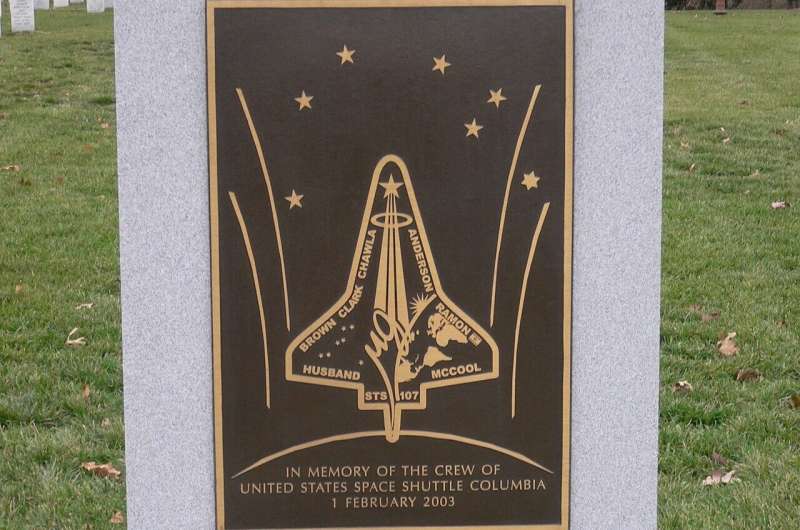"You'd look at the underside or the sides of the orbiter with those delicate silicone tiles, and he said it was like somebody had taken a shotgun and just shredded it," Nelson said. "A warning about what was to come."
The two shuttle accidents, particularly, led to changes in how NASA operates, with a safety-first mentality that can seem to slow down progress at times, Nelson said.
"The bottom line is this. Speak up. A question, even a simple question is more forgivable than a mistake that can result in a tragedy, and each of us has a responsibility to cultivate a work environment where every member of the NASA family feels empowered to voice doubt. Make your concerns heard. Communicate openly," he said.
The times between NASA's three major tragedies have been close to two decades each, and now NASA has gone the longest run without human loss of life in spaceflight.
During those runs, though, the American space program featured only one spacecraft managed by the U.S. government. Now NASA has multiple commercial partners with SpaceX's Crew Dragon and Boeing's CST-100 Starliner flying astronauts to the International Space Station while also working with its own Orion crew capsule for moon missions in the Artemis program.
Later this decade, NASA will rely on SpaceX's Starship as well as potentially a second commercial lunar lander to keep its astronauts safe during trips to the moon's south pole, part of NASA's plans to eventually send humans to Mars.
Alex Roland, a retired Duke University history professor and former NASA historian, warns the push to deep-space exploration could become deadly.
"Don't send people to Mars or the moon—yet," he said, noting human missions are "unnecessary, inefficient and exorbitantly expensive. ... The spacecraft systems redundancies necessary to guarantee human survival of a Mars mission can only be imagined. Sending people to Mars in any foreseeable future is a dangerous, expensive stunt. Leave it to Elon Musk."
Even for SpaceX, though, he foresees potential disaster.
"I think (Musk) has an uncanny ability to achieve very difficult goals," Roland said. "In my opinion, he is moving faster than NASA ever has. I will be surprised if SpaceX does not experience a fatal accident before it attempts a Mars mission. I find it hard to predict how that will change the calculus."
He added, "Musk might change his agenda. The government might increase regulation of non-governmental spaceflight. NASA's fatal accidents did not change NASA's manned programs, but they sure set them back for a while."
Commercial efforts closer to home have proven risky as well.
Blue Origin and Virgin Galactic continue to pursue space tourism flights for short suborbital trips, an endeavor that has seen the Federal Aviation Administration already halt flights for safety concerns for both companies. Blue Origin's New Shepard remains grounded after a booster incident last year sent its capsule blasting away to safety, although that flight did not have humans on board.
Down the line, Sierra Space looks to develop its Dream Chaser cargo spacecraft, which could fly for the first time this year, into one that could fly humans as well.
The field is growing, with projections of the number of people having flown to space—more than 600 in 60 years since the first person in space in 1961—to more than double in the next decade.
"It's a challenge, but it is the responsibility of us as the overseers even though we may have a partner in the public-private sector," Nelson said. "We've got to look over their shoulder."
Deputy Administrator Pam Melroy said she expects human commercial spaceflight will flourish the same way commercial aviation did.
"At some point, the industry will have to learn its lessons on its own," she said noting NASA's close relationship with the FAA to scrutinize commercial spaceflight. "We hope to transfer that knowledge as things go forward, but I think for at least a decade or more to come, we're going to be extremely engaged. ... They're going to have to grow up and have their own regulator someday, and we're going to support that as best we can with all the knowledge of the agency."
One part of that effort is NASA's Apollo Challenger Columbia Lessons Learned Program based out of KSC. The program is managed by Michael Ciannilli, who was part of the Columbia recovery team and responsible for the moving Challenger and Columbia exhibit "Forever Remembered" at KSC Visitor Complex that opened in 2015.
That means venturing out and talking with not only groups within NASA, but commercial aerospace partners, and even industries outside of aviation that could reap some benefit in the wake of tragedy. The program tackles everything from engineering to management-type discussions.
The main thrust of the program is to prevent future accidents.
"We're sharing these ways with folks that are on design teams, designing the new systems, those huge new rockets—sharing new processes, working on establishing cultures," he said. "We're also working with all of the commercial spaceflight providers that are coming on board, and they're developing their systems and their rockets and procedures and programs. We're working with them intimately now, so it's still way before their first flight."
That includes discussions with SpaceX, Blue Origin, Boeing and others.
Ciannilli said thinks the Columbia and Challenger disasters help him bring home that message of safety.
"They're just flying a new mission," he said of the two space shuttles. "The mission is to inspire, educate and change things and to positively impact the future for the better."
©2023 Orlando Sentinel.
Distributed by Tribune Content Agency, LLC.



